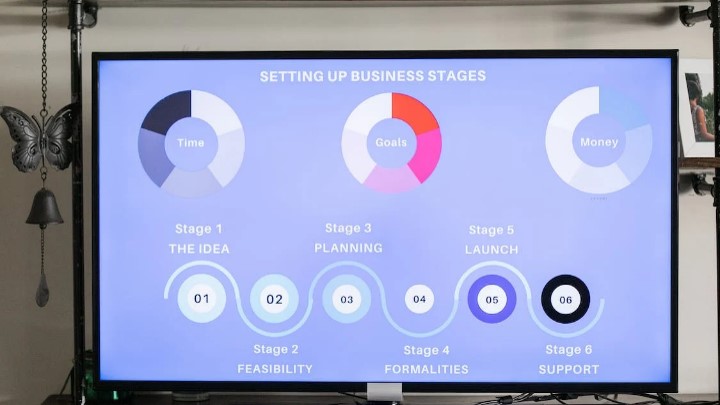Last Updated on April 22, 2023 by Uncle Pat Ugwu
Inclusive education involves educating students with and without disabilities in the same classroom setting. This approach is beneficial for students with autism, as it allows them to learn and interact with their typically developing peers. Inclusive education also promotes acceptance and understanding among all students.
To ensure the success of children with special needs, it is essential for teachers to be well-prepared and equipped with the necessary strategies and accommodations.
In this blog, we will explore strategies for creating an autism-friendly classroom environment and supporting the learning and socialization of students with autism. We will also discuss the importance of collaborating with parents and other professionals to ensure the best possible educational experience for these students.
What is Autism?
Autism is a neurodevelopmental disorder that affects communication and social interaction. It is a spectrum disorder, which means that the severity of symptoms can vary greatly from person to person. According to the Centers for Disease Control and Prevention, approximately 1 in 54 children in the United States are diagnosed with autism. This means that it is likely that teachers will encounter students with autism in their classrooms at some point in their careers. – SJSU Publications.
Let’s now look at the tips for autism friendly classroom every teacher should learn and apply. Don’t forget we wrote a blog on how to survive your first teaching year. The tips there is also applicable even to an experienced teacher.
1. Understanding the needs of students with autism
One of the key elements of creating an autism-friendly classroom is understanding the unique needs of students with autism. This includes recognizing and addressing sensory processing differences, social and communication challenges, and learning styles and strengths.
- Sensory processing differences
Individuals with autism often have challenges in processing and integrating sensory information from their surroundings. This can manifest as an oversensitivity to certain stimuli (e.g. loud noises, bright lights) or under-sensitivity to others (e.g. feeling no pain when touched). To support the success of students with autism in the classroom, it is essential for teachers to be aware of these sensory processing differences and to make necessary accommodations, such as providing noise-canceling headphones or dimming the lights to create a more calming environment. - Social and communication challenges
Students with autism may face challenges in social interaction and communication, including difficulty initiating and maintaining conversations, difficulty understanding and expressing emotions, and difficulty interpreting social cues. To support these students, teachers can provide explicit instruction on social skills, use visual supports like social stories and cue cards, and offer alternative communication methods such as sign language or assistive technology. - Learning styles and strengths
Each student with autism is unique and may have their own learning styles and strengths. It is important for teachers to get to know their students with autism and to identify their individual needs. This may include adapting the pace of instruction, providing visual supports such as graphic organizers or visual schedules, or incorporating sensory breaks into the lesson. By tailoring instruction to the individual needs of each student, teachers can support their learning and success in the classroom.
2. Classroom accommodations
To support the learning and success of students with autism, specific changes to the classroom environment or teaching methods can be made. These changes are called accommodations. Some examples of accommodations that may be helpful for students with autism include:
- Structural changes
Structural changes refer to changes that are made to the physical layout or arrangement of the classroom. This can include things like changing the seating arrangement to allow for more personal space or creating a designated quiet area for students who need a break from the noise of the classroom. Other structural changes that may be helpful include using colored overlays or filters to reduce visual distractions, or installing noise-reducing materials to reduce excess noise in the classroom. - Visual supports
Visual supports are any type of visual aid that can help students with autism process and understand information. This can include things like schedules, visual rules, or cue cards. Visual supports can be especially helpful for students with autism because they can provide a clear and concrete way to understand and remember information. - Adaptive equipment
Adaptive equipment refers to any type of equipment or device that is designed to assist individuals with disabilities in completing tasks. This can include things like noise-canceling headphones to reduce sensory overload, fidget toys to help students with sensory-seeking behaviors, or specialized seating to support proper body alignment and posture. By providing adaptive equipment, teachers can help students with autism participate more fully in the classroom.
3. Social skills development
Developing social skills is an essential aspect of education for all students, but it can be especially challenging for students with autism. These students may struggle with initiating and maintaining conversations, interpreting social cues, and understanding and expressing emotions. Therefore, teachers must provide explicit instruction on social skills in the classroom.
- The importance of explicit teaching
Explicit teaching involves directly teaching and modeling a specific skill or behavior. This is especially important for students with autism, as they may not pick up on social cues and expectations in the same way that their typically developing peers do. By providing explicit instruction, teachers can help students with autism understand and practice the social skills that are necessary for success in the classroom and in everyday life. - Strategies for teaching social skills
Teachers can use a range of strategies to teach social skills to students with autism. One such strategy is the use of social stories, which are brief narratives that describe a social situation and the appropriate behavior or response. Social stories can assist students with autism in understanding the expectations and norms of a given social situation and provide them with a script for how to behave appropriately. Other strategies for teaching social skills include role-playing, reinforcing positive social behaviors, and using visual supports such as social scripts or cue cards. Implementing a variety of strategies can help teachers to help students with autism develop and practice critical social skills.
4. Communication strategies
Effective communication is an essential part of education and is especially important for students with autism. Many students with autism struggle with verbal communication and may benefit from alternative communication methods.
- Alternative communication methods
Alternative communication methods are methods of communication that do not rely on verbal language. This can include sign language, assistive technology, or picture exchange systems. By providing alternative communication methods, teachers can give students with autism additional ways to express themselves and participate in the classroom. - Supporting language development
In addition to providing alternative communication methods, teachers can also support the language development of students with autism through the use of visual supports and augmentative communication devices. Visual supports are any type of visual aid that can help students with autism process and understand language. This can include things like graphic organizers, visual schedules, or visual rules.
Augmentative communication devices are electronic or mechanical devices that can be used to supplement or replace verbal language. These devices can range from simple communication boards with pictures or symbols to more advanced devices that allow students to type or voice output their thoughts and ideas. By using visual supports and augmentative communication devices, teachers can support the language development of students with autism and help them more fully participate in the classroom.
5. Supporting independence and self-regulation
Supporting independence and self-regulation is an important aspect of education for all students, but it can be especially challenging for students with autism. These students may struggle with self-care tasks such as dressing and toileting, as well as with regulating their emotions and behaviors. By teaching self-care skills and providing strategies for supporting self-regulation, teachers can help students with autism develop the skills they need to be successful in the classroom and in everyday life.
- Teaching self-care skills
Teaching self-care skills involves explicitly teaching and practicing tasks such as dressing, toileting, and personal hygiene. It is important for teachers to break these tasks down into smaller steps and to provide clear and consistent instruction. Visual supports such as schedules or visual rules can also be helpful in teaching self-care skills. - Strategies for supporting self-regulation
There are many strategies that teachers can use to support the self-regulation of students with autism. One strategy is the use of break cards, which are cards that students can use to request a break or a change in activity when they are feeling overwhelmed. Other strategies for supporting self-regulation include the use of deep pressure input, such as weighted blankets or compression clothing, and providing calming activities or sensory breaks. By using a variety of strategies, teachers can help students with autism develop the skills they need to regulate their emotions and behaviors.
6. Collaborating with parents and other professionals
Collaborating with parents and other professionals is an important aspect of supporting the success of students with autism in the classroom. By involving parents in the educational process and collaborating with other professionals, teachers can get a better understanding of the individual needs of each student and can ensure that they are receiving the support they need to succeed.
- Importance of involving parents
Involving parents in the educational process is essential for the success of students with autism. Parents are the experts on their own children and can provide valuable insights and information about their needs and preferences. By working closely with parents, teachers can get a better understanding of the individual needs of each student and can ensure that they are receiving the support they need to succeed. - Collaborating with other professionals
Collaborating with other professionals, such as speech therapists and occupational therapists, can also be beneficial for students with autism. These professionals have specialized training and expertise in working with students with disabilities and can provide additional support and strategies for success in the classroom. Collaborating with other professionals and teachers can ensure that students with autism are receiving the comprehensive support they need to succeed.
Final Thoughts
Creating an autism-friendly classroom is essential for supporting the learning and socialization of students with autism. By understanding the unique needs of these students and implementing strategies such as structural changes, visual supports, and social skills development, teachers can create an inclusive and supportive classroom environment.
Collaboration with parents and other professionals is also key in ensuring the success of students with autism in the classroom. With the right tools and approaches, teachers can provide meaningful and inclusive education for all of their students, including those with autism. Here are the benefits of collaborative learning.
Sponsored Posts

Are you passionate about educational technology or digital tools? We’re…






